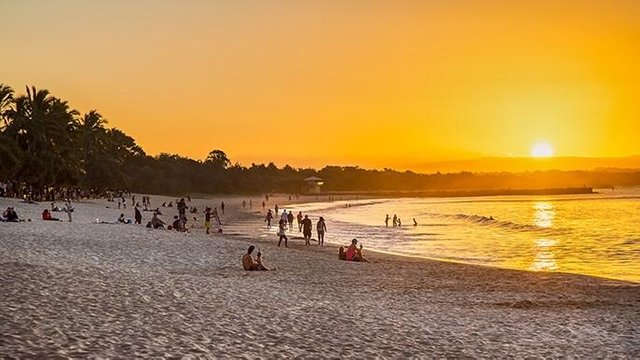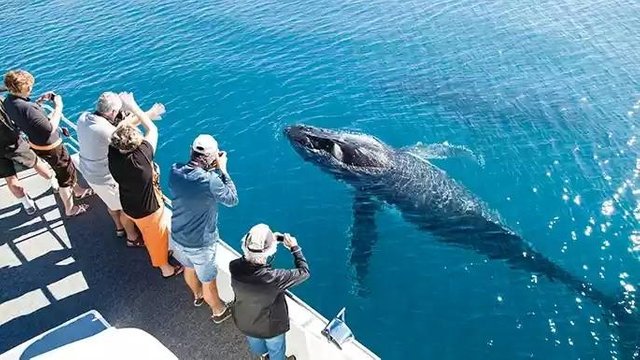Australia’s Nature Coast, a 200km stretch of national parks, rainforests, waterways and perfect beaches, is the closest you’ll get to paradise on Earth. And this paradise doesn’t need wings: once you’re in Brisbane, it’s just an hour’s drive north to reach the glorious Sunshine Coast. This is the first half of Australia’s Nature Coast, the second half being Fraser Coast.

Between Caloundra at the southern end of the Sunshine Coast and Noosa Heads another hour north, you’ll find miles of wide, sparkling Pacific Ocean beaches. Early mornings and around dusk are the perfect time to stroll the sands.
Noosa Heads is especially enticing. The main drag along Hastings Street is a shopping haven, with a smorgasbord of dining options in the evening. In the small national park that covers the headland adjoining the town, koalas can usually be spotted in the eucalypts in the car park, and you can walk or jog paths through the dappled light of lowland subtropical rainforest. Noosa is also the starting point for one of the great “road” trips in the world: the Great Beach Drive, a 380km four-wheel-drive run along, yes, the beach.
Just to the north is one of Queensland’s best-kept secrets: the Noosa Everglades. Next to Florida, it’s one of only two such environments on earth. It’s on the upper reaches of the Noosa River, known as the “river of mirrors” because of the extraordinary reflective qualities of the water, and you can explore this magnificent area by guided tour or by hiring a kayak.
Volcanic activity created the Glass House MountainsVolcanic activity created the Glass House Mountains
Volcanic activity created the Glass House Mountains
When the day heats up you can escape into the cooler hinterlands slightly inland. In the south are the iconic Glass House Mountains of Beerwah, Tibrogargan and Coonowrin, formed through volcanic activity millions of years ago. In their shadow is Australia Zoo, still owned by the family of the late “crocodile hunter”, Steve Irwin.
Further up into the hills are the towns of Woodford, Maleny, Montville and Kenilworth. In the new year, Woodford is home to one of the world’s biggest folk festivals, while Maleny and Montville are old dairy farming villages – a visit to the Maleny cheese factory is a must – that make the perfect stop for a leisurely lunch with stunning views back towards the coast.
Back on the coast, north of Noosa, lies Great Sandy National Park, which includes the pretty seaside town of Rainbow Beach, so-called for its coloured sands. Be sure to visit the Carlo Blow, a moonscape sand mass from which visitors watch the sun setting over Tin Can Bay and the Great Sandy Strait, followed by a celestial light show of unfamiliar constellations.
After that, you reach Inskip Point. This is the southern “jump-off” spot to get to Fraser Island – the Fraser Coast being the second part of Australia’s Nature Coast. Known to the traditional Butchulla people as K’gari (pronounced “gurri”), meaning “paradise”, Fraser Island is one of Queensland’s crown jewels. The largest sand island in the world, it recently celebrated 25 years as a World Heritage site and is a magnificent unspoilt wilderness of verdant subtropical rainforest and “perched” lakes.

Perched lakes are fed only by rainwater, not groundwater or streams, with the sand at their base preventing drainage. The most famous is the awe-inspiring Lake McKenzie, where you can swim in the turquoise water or just walk on its soft, white silica sand. Fraser Island is also famous for its wildlife, particularly its population of rare pure dingoes.
Hervey Bay on the mainland is the main access point for Fraser Island, particularly its secluded west coast. This is a fabulous spot all year round but it’s an absolute must-stop from July to November as Hervey Bay is the only place where these giant mammals, which migrate from Antarctica to breed in the warm tropical waters of the Whitsunday Islands further north, pause for a few days in their long journey to rest and play with their newborn calves.
A very short plane ride from Hervey Bay is another of Queensland’s better-kept secrets. Lady Elliot Island is the southernmost island of the Great Barrier Reef, and visitor numbers are restricted so you can get close to nature uninterrupted. Here you can scuba dive or snorkel among the corals with manta rays and turtles, while on dry land you’ll find large populations of breeding seabirds.
Three words: take your time. You can take several days over the Great Beach Drive alone; if you journey inland to the hinterland towns, there is no shortage of bed and breakfasts, while Lady Elliot Island has its own 41-room Eco Resort if you choose to stay the night. No one’s in a rush here – and Australia’s Nature Coast is something to be savoured.
Nice one dear.. what a lovely place to be
Downvoting a post can decrease pending rewards and make it less visible. Common reasons:
Submit